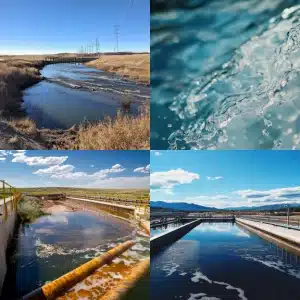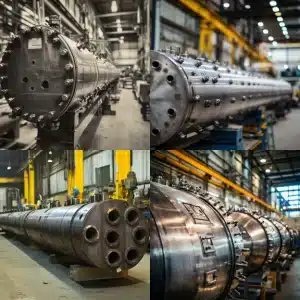Regular inspection of dehydrator pressure vessels is essential for preventing corrosion, structural failures, and costly downtime. Proactive testing and maintenance significantly extend vessel lifespan and ensure safe, efficient industrial operations.
Regular Inspection of Dehydrator Pressure Vessels Is Essential
For dehydrator pressure vessels, regular inspections are critical to ensuring their safety and efficiency. Specifically, inspections help identify early signs of damage and extend the vessel’s lifespan. At Red River, we emphasize the importance of these evaluations in industrial setups. By supporting our clients with comprehensive inspection plans, we ensure potential risks are minimized, saving both time and resources.
Understanding the Role of Dehydrator Pressure Vessels in Industrial Operations
Dehydrator pressure vessels serve an essential role in removing moisture from gas, enhancing operational efficiency. However, poor maintenance or infrequent testing may lead to issues like corrosion, material fatigue, or inefficient operations. Therefore, regular inspections of dehydrator pressure vessels ensure they continue to meet the high standards required for demanding industrial processes. At Red River, our goal is to provide durable and reliable solutions for all industrial dehydration needs.
Risks of Skipping Routine Inspection and Testing
Skipping routine inspections can lead to numerous problems, ranging from diminished performance to catastrophic failure. For instance, small issues like corrosion, cracks, or structural weaknesses can escalate quickly if left unaddressed. As a result, costly repairs and operational downtime may follow. To avoid these risks, timely inspections are critical to identifying and resolving issues before they become significant.
How Frequent Inspections Can Improve Vessel Lifespan
Regular inspections of dehydrator pressure vessels significantly increase a vessel’s lifespan by catching and addressing potential problems early. For this reason, Red River promotes customized inspection schedules tailored to your specific operational needs. By adopting this proactive approach, businesses can prevent costly breakdowns and maintain vessel performance over the long term.
Key Steps for Inspection and Testing of Dehydrator Pressure Vessels
To maximize safety and efficiency, a comprehensive inspection process is necessary. At Red River, we follow a structured method to ensure no aspect of the vessel is overlooked.
1. Visual Inspection for External Wear and Tear
The first step involves checking for external signs of damage, such as cracks, dents, or corrosion. By identifying these issues early, we prevent further degradation.
2. Pressure Testing: Ensuring Structural Integrity
Pressure testing helps verify the vessel’s ability to withstand operational conditions. In other words, it confirms structural soundness and reveals potential weaknesses.
3. Ultrasonic Testing: Identifying Hidden Defects
For internal defects that visual inspections can’t detect, we use ultrasonic testing. This advanced method pinpoints issues like material thinning or hidden cracks.
4. Documentation and Reporting of Inspection Results
Maintaining accurate records of inspection findings is crucial. At Red River, we ensure detailed documentation, which helps guide future maintenance and operational planning.
Common Issues Found During Dehydrator Pressure Vessel Testing
Routine testing of dehydrator pressure vessels is critical for figuring out and addressing potential troubles before they increase into the most important troubles. At Red River, we regularly come across numerous unusual issues during our inspections that could affect the protection and performance of those vessels.
Corrosion and Its Impact on Vessel Performance
Corrosion remains one of the most common problems in pressure vessels. If left unchecked, it can compromise structural integrity, leading to leaks or total failure. Regular monitoring and proactive measures can mitigate these risks, ensuring long-term performance and safety.
Cracks, Leaks, and Structural Weaknesses
Cracks, leaks, and different structural weaknesses also are regularly identified throughout testing. These issues frequently result from extended publicity to excessive pressure, temperature fluctuations, or material fatigue. If now not addressed directly, even small cracks can develop, compromising the vessel’s capacity to contain pressure effectively. Leaks are another purple flag, signaling a breach inside the vessel’s containment competencies, that may result in dangerous running situations.
Best Practices for Long-Term Maintenance of Dehydrator Pressure Vessels
Maintaining the longevity and performance of dehydrator pressure vessels requires a proactive approach. At Red River, we emphasize the significance of lengthy-time period upkeep strategies to prevent troubles and maximize the efficiency of your vessels.
Scheduling Regular Maintenance Based on Inspection Results
One of the only practices for ensuring the toughness of your pressure vessels is scheduling ordinary renovation. After undertaking thorough inspections, it’s important to address any recognized problems right away. Whether it is fixing minor corrosion or acting pressure checks to ensure structural integrity, timely upkeep based on inspection consequences is prime to preventing highly-priced upkeep or risky malfunctions down the road. At Red River, we collaborate closely with our customers to create custom-designed protection schedules tailored to the particular desires and operating conditions of their vessels.
How to Properly Document and Track Vessel Maintenance
Effective preservation relies on correct documentation and tracking. Recording each inspection, restoration, and test result is crucial for long-term vessel performance. Properly monitoring the records of each vessel allows you to perceive styles, predict capacity problems, and make knowledgeable decisions on future preservation needs. At Red River, we help customers install clear documentation systems, making sure that each step of the upkeep system is logged, enhancing responsibility and transparency at some stage in the lifecycle of your pressure vessels.
Need a reliable partner?
Red River specializes in the design and manufacturing of pressure vessels. We also fabricate related items such as prefabricated spools and skid packages.
Reach Out to us today and experience the Red River difference. Where American Made and American Values come together, we care more.
Frequently Asked Questions
1. How frequently ought a dehydrator pressure vessel be inspected?
The frequency of inspection for a dehydrator pressure vessel relies upon several factors, along with the vessel’s operating situations, cloth type, and industry requirements. As preferred, an intensive inspection ought to be performed yearly. However, vessels that perform underneath extra severe situations, inclusive of high pressure or temperature, may additionally require more frequent inspections occasionally as frequently as every six months. It’s also critical to behavior extra inspections if there are any changes in the vessel’s operating surroundings or after any enormous repairs.
2. What are the most common causes of failure in dehydrator pressure vessels?
The maximum commonplace reasons for failure in dehydrator pressure vessels include corrosion, fabric fatigue, and poor protection. Corrosion is especially risky as it weakens the vessel’s walls and might result in leaks or structural failure over the years. Fatigue happens from extended exposure to high pressures, temperatures, or fluctuating hundreds, that could bring about cracks or different structural weaknesses. Improper or infrequent maintenance can exacerbate those troubles, leading to untimely failure. This is why it is essential to observe habitual inspection and pressure vessel upkeep great practices.
3. What trying-out techniques are normally used to ensure the integrity of dehydrator pressure vessels?
The 3 maximum commonplace checking-out methods for dehydrator pressure vessels are visual inspection, pressure trying out, and ultrasonic testing. Visual inspection facilitates becoming aware of external wear and tear, including cracks or corrosion. Pressure trying out is used to make certain the vessel can face up to the essential working pressures without leaks or deformations. Ultrasonic testing is a complicated method that detects inner defects, inclusive of hidden cracks, that won’t be seen at some point during a popular visual inspection. Together, those techniques offer a complete view of the vessel’s situation.
4. How does corrosion affect the overall performance and protection of a dehydrator pressure vessel?
Corrosion is a main issue for pressure vessels, especially the ones utilized in environments with excessive humidity, chemical compounds, or varying temperatures. Corrosion degrades the vessel’s cloth over the years, causing the walls to thin and decreasing the general energy of the vessel. If left unchecked, corrosion can lead to leaks, pressure loss, or even a catastrophic failure. Regular inspection and preventive renovation, which includes the use of anti-corrosion coatings and substances, are key to preventing corrosion-associated failures.
5. What needs to be covered in a dehydrator pressure vessel protection log?
A renovation log for a dehydrator pressure vessel has to consist of precise statistics of every inspection, test, and repair. This includes the date of the inspection, the strategies used (along with pressure or ultrasonic trying out), the effects of the inspection, and any corrective actions taken. Additionally, the log should document any parts changed, materials used, and future encouraged inspection dates. Keeping a radical upkeep log not simplest enables making sure of the vessel’s protection and performance but also helps compliance with enterprise standards and rules.
Key Takeaways
- Routine inspections catch early signs of corrosion, cracks, and material fatigue before they escalate.
- Proper testing visual, pressure, and ultrasonic ensures structural integrity and long-term performance.
- Skipping inspections increases the risk of failures, safety hazards, and expensive operational interruptions.
- Detailed documentation and tailored maintenance schedules help maximize vessel lifespan and reliability.
Related Blog Post
- Understanding Dehydrator Lifecycle Management
- Understanding Dehydrator Lifecycle Management
- Why Upgrading Aging Dehydrator Pressure Vessels is Crucial
- Why Upgrading Aging Dehydrator Pressure Vessels is Crucial
- Why Regular Inspection of Dehydrator Pressure Vessels is essential
- Understanding the Lifecycle Costs of Dehydrator Pressure Vessels




